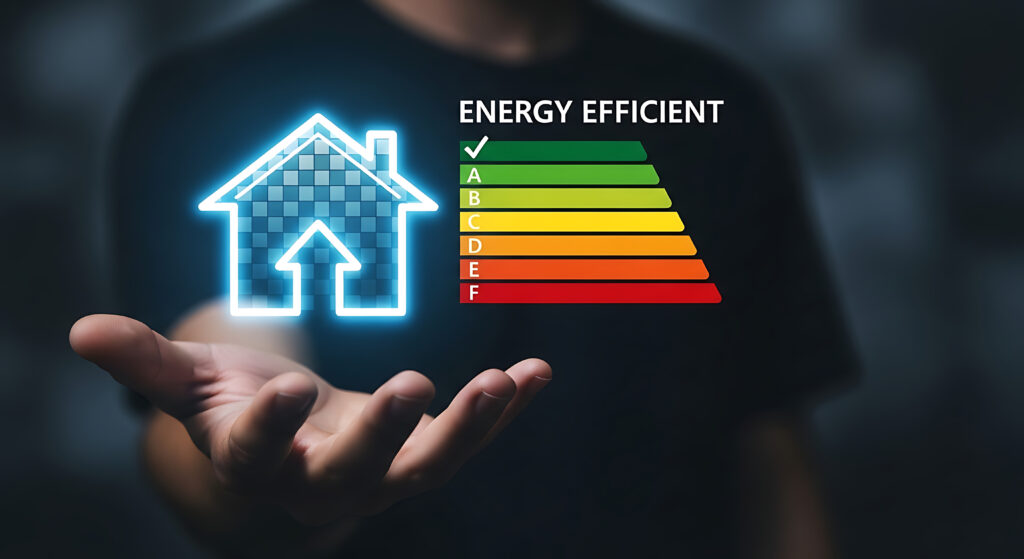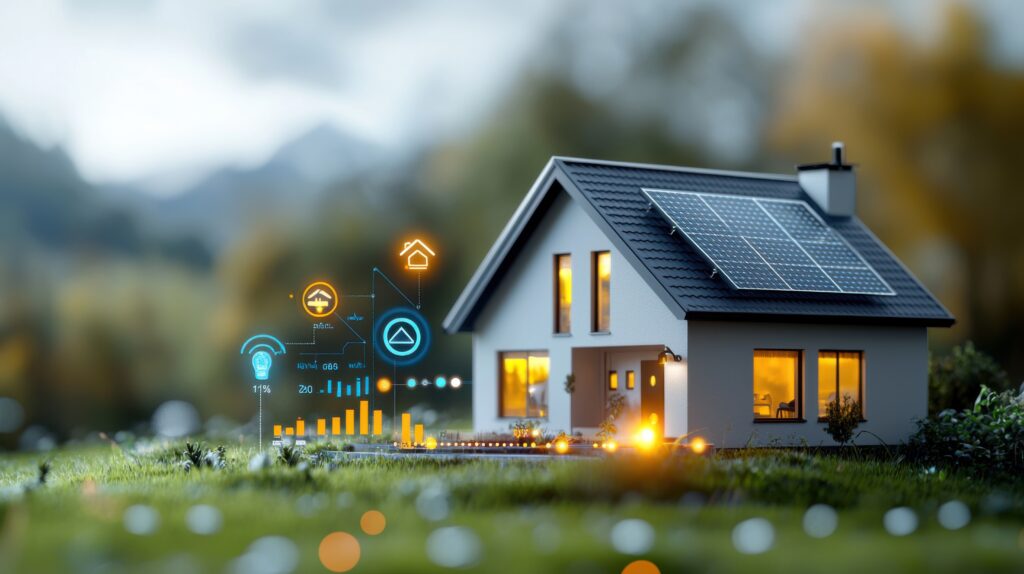Many homeowners today look for ways to lower their energy bills and reduce their impact on the environment. Making a house more energy-efficient does not have to mean large renovations or high costs. Simple changes, when done properly, can make a big difference over time. From small fixes like sealing leaks to bigger steps like upgrading insulation, there are many ways to cut down on wasted energy. This guide explains practical and affordable methods that can help any homeowner create a more energy-saving home.
Why Energy Efficiency Matters
Using less energy is not just about saving money. It also helps reduce demand on power plants, which leads to fewer greenhouse gas emissions. A more energy-efficient home can feel more comfortable, with fewer drafts and better temperature control. Over time, these upgrades can also increase a home’s value, making it a smarter investment for the future.
Practical Ways to Make Your Home Energy-Efficient
Improving energy efficiency is easier when broken down into small, manageable steps. Start exploring these home energy upgrades today to make your house more comfortable and affordable to maintain.
Check for Air Leaks
One of the first steps to improving energy efficiency is checking for drafts. These small leaks let warm air escape in the winter and cool air out in the summer. Doors, windows, and areas around plumbing are common spots where air leaks can occur.
To check, feel around window frames and door edges on a windy day. If you feel air coming through, sealing those gaps with weatherstripping or caulk can solve the problem. Sealing leaks is an easy and affordable fix that can save both energy and money.
Improve Insulation
Insulation keeps your home warm in winter and cool in summer by slowing the transfer of heat. Older homes, especially, may not have enough insulation. The attic is usually the best place to start, as most heat escapes through the roof.
Consider adding fiberglass batts, spray foam, or blown-in insulation, depending on what suits your home. Insulating walls, crawl spaces, and basements can also help. Though this may require a bit more investment, better insulation can significantly lower heating and cooling costs.
Upgrade to Energy-Saving Windows
Windows have a big impact on how much energy a home uses. Older single-pane windows allow heat to escape in winter and let it in during summer. Replacing them with double-pane or triple-pane options can help keep indoor temperatures stable. Choosing windows with a special low-emissivity (low-E) coating adds extra protection by bouncing heat back inside when it’s cold and blocking it during warmer months.
For homeowners not ready to replace windows, using heavy curtains or insulated blinds is a practical way to prevent heat loss and reduce energy waste.
Upgrade to LED Lighting
Switching to LED bulbs is a simple step that can lead to noticeable energy savings. Compared to traditional incandescent bulbs, LEDs use up to 80% less energy and last much longer. Replace bulbs in areas used most often, such as kitchens, living rooms, and hallways.
While LEDs might cost a bit more upfront, they pay off over time through lower electricity use and fewer replacements.
Use Smart Thermostats
A programmable or smart thermostat allows homeowners to control heating and cooling more efficiently. Set the system to lower the temperature while away from home and raise it just before returning. This avoids heating or cooling an empty house.
Many modern thermostats learn daily habits and adjust automatically. They can even be controlled remotely through a smartphone. These small changes can lead to steady savings without much effort.
Choose Energy-Efficient Appliances
Older appliances often use more energy than necessary. When it’s time to replace refrigerators, washing machines, or dishwashers, choose models with an ENERGY STAR label. These appliances meet higher efficiency standards and use less water and electricity.
For example, replacing an old refrigerator can save several hundred kilowatt-hours each year. Even if current appliances still work, planning for energy-efficient replacements in the future can help reduce energy waste.
Maintain Your Heating and Cooling Systems
Regular maintenance ensures that your heating, ventilation, and air conditioning (HVAC) systems work efficiently. Dirty filters, clogged vents, and worn parts make the system work harder than necessary, wasting energy.
Change air filters every one to three months. Schedule yearly professional check-ups to inspect and clean the system. Simple tasks like clearing vents and sealing ductwork can also improve airflow and reduce strain on your HVAC system.
Use Ceiling Fans Wisely
Ceiling fans help circulate air, reducing the need for heating and cooling. In summer, set fans to rotate counterclockwise to create a breeze that cools the room. In winter, reverse the direction so that warm air near the ceiling is pushed down.
Fans use much less electricity than air conditioners, so using them properly can help cut energy use without sacrificing comfort.
Limit Hot Water Use
Water heating is often the second-largest energy expense in homes. Simple steps can reduce this cost:
- Lower the water heater temperature to 120°F.
- Install low-flow showerheads and faucets.
- Fix any leaks in pipes or taps.
- Wash clothes in cold water when possible.
Upgrading to an energy-efficient water heater can also make a difference over time.
Install Solar Panels
For homeowners willing to invest more, solar panels can greatly reduce energy bills. Solar energy is renewable, and once panels are installed, much of the energy produced is free. Depending on location and roof space, solar panels can power a significant portion of a home’s needs.
Some regions offer tax credits or rebates to help with installation costs. Though the upfront price is higher, many homeowners find that solar panels pay for themselves after a few years.
Make Use of Natural Light
Using natural light during the day reduces the need for artificial lighting. Arrange furniture to make better use of sunlight. Open blinds and curtains during the day to brighten rooms naturally.
Skylights or solar tubes are also options to bring more daylight inside, though these may require professional installation.
Consider Landscaping for Shade
Plants and trees can help reduce energy use by providing shade and acting as windbreaks. Planting trees on the south and west sides of a home can block sunlight during the hottest parts of the day. Shrubs planted close to the house can help insulate walls.
Strategic landscaping not only makes the property look better but also reduces heating and cooling costs.
Monitor and Track Energy Use

Knowing how much energy a home uses is the first step toward reducing it. Many utility companies offer online tools or reports to show household energy use patterns. Smart plugs and home energy monitors can help track where most energy is used.
By understanding energy habits, homeowners can find areas that need improvement and monitor progress over time.
Conclusion
Making a home more energy-efficient doesn’t have to mean big changes overnight. Simple upgrades like sealing drafts, adding insulation, or changing light bulbs can quickly lower energy bills. More significant steps, such as upgrading appliances or installing solar panels, offer long-term savings. Every improvement, no matter how small, contributes to a more comfortable home and a healthier environment. With thoughtful changes, any homeowner can build a more energy-efficient home that benefits both the wallet and the planet.

